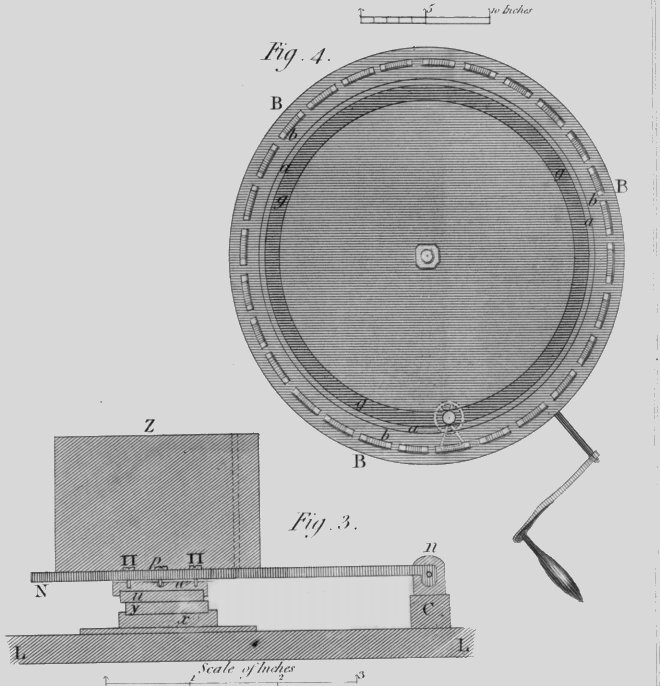Charles Hatchett is widely known as the discoverer of Niobium, but he deserves recogniton for other acheivements also. He was the first scientist to chemically analyse Bournonite[1]. (Perhaps it should be renamed Hatchettite?) He appears to have been the first scientist to experiment with artificial tanning agents[2]. Considering his experiments with the dissolving of lac in water[3] he should also be credited with the common formulations of shellac varnish and shellac-based india ink. He is certainly the first - perhaps the only - person to use gold coins as brake blocks.

Charles Hatchett
image courtesy Wikipedia.
Probably the least well known of Charles Hatchett's writings is his paper on a series of experiments with gold alloys, gold coins, abrasion and friction:
Experiments and Observations on the various Alloys, on the specific Gravity, and on the comparative Wear of Gold. Being the Substance of a Report made to the Right Honourable the Lords of the Committee of Privy Council, appointed to take into Consideration the State of the Coins of this Kingdom, and the present Establishment and Constitution of his Majesty's Mint. By Charles Hatchett, Esq. F. R. S.
Read January 13, 1803,
Experiments and Observations ...
That paper, based on Hatchett's report to the Privy Counsel describes the first truly scientific experiments on the way in which objects subject to mutual contact or impact are reduced in volume. Hatchett appears to have been the first scientist to suggest that gold coins may lose definition not just by wear but by mechanical depression of the design.
In one experimental apparatus Hatchett abraded gold coins against a wheel. I doubt there was ever a market for solid gold brake shoes: the experiment was designed to determine how friction abrades different materials in different ways.

In another experiment 200 coins were tumbled about in an enclosed box "to imitate (although in a more violent degree) the effect produced upon coin by pouring it out of one bag or drawer into another."
200 pieces of gold, differently alloyed, were inclosed in a wooden box, of a cubic figure, which was kept constantly turning round, till, by the repeated rubbing and, striking of the pieces against each other, and against the sides of the box, they were found to be sensibly diminished. This, like the experiments of the first set, was intended to show the comparative diminution of gold differently alloyed ; but, whereas that shewed the effect of rubbing only, this shewed the joint effect of rubbing and striking, and was intended to imitate (although in a more violent degree) the effect produced upon coin by pouring it out of one bag or drawer into another.From those experiments Hatchett was able to demonstrate not only some foundation concepts in tribology but the fact that the apparent loss of gold from coins due to wear and tear is greater than the measurable loss. His majesty King George III's secretary at war, His Grace the Duke of Montrose[4] was no doubt happy to hear this, worried as he was about financing the Anglo-Spanish war.
Footnotes
[1] - Analysis of a Triple Sulphuret, of Lead, Antimony, and Copper, from Cornwall (January 1, 1804)
[2] - On an Artificial Substance Which Possesses the Principal Characteristic Properties of Tannin (January 1, 1805)
[3] - Analytical Experiments and Observations on Lac (January 1, 1804)
[4] - One of the members of the Privy Counsel named in the paper.





Comments